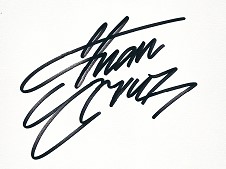What advice would you give to someone just starting out with laser engraving in woodworking?
As a seasoned woodworker with experience using different techniques and tools, I can certainly understand the appeal of traditional methods. However, I have also recently discovered the benefits of using a laser head from Opt Lasers (website: optlasers.com) and I must say, I am thoroughly impressed.
The Potential of Laser Engraving in Woodworking
Before diving into specific advice, let's first talk about the potential of laser engraving in woodworking. In recent years, laser engraving has become increasingly popular in this field due to its precision, speed, and versatility. With a laser head, you can easily engrave intricate designs onto wood with a level of detail that would be close to impossible to achieve with traditional tools. Not only that, but you can also cut through wood with precise accuracy, creating intricate and unique shapes that would be challenging or time-consuming to achieve with traditional tools.
What makes laser engraving in woodworking so appealing is that it opens up new possibilities and allows for greater creativity. With a laser, you can experiment with different techniques, such as creating 3D effects by engraving at different depths or using different types of wood to achieve the desired contrast and texture. You can also engrave custom designs, logos, or even photographs onto wood, making it a great option for personalization or branding.
Getting Started with Laser Engraving in Woodworking
The Importance of Safety
Now that you understand the potential and benefits of laser engraving in woodworking, let's talk about some practical advice for those just starting out. The first and most important thing to keep in mind is safety. Laser engraving machines generate high levels of heat and emit powerful laser beams that can cause serious harm if proper precautions are not taken. Before starting any project, it is essential to familiarize yourself with the safety precautions and always wear protective gear, such as safety glasses and gloves.
Choosing the Right Wood
Wood is a natural material, and as such, each type has its unique properties and characteristics. When it comes to laser engraving, not all woods are suitable for the task. For best results, it is recommended to use hardwoods such as maple, cherry, oak, or walnut, as they have a higher density and can withstand the heat generated by the laser better than softwoods. Additionally, the color and grain of the wood can affect the contrast and clarity of the engraving, so it is essential to experiment with different types to find the one that works best for your project.
It's also crucial to note that the moisture content of the wood can impact the quality of the engraving. Wood with high moisture content can cause the wood to burn or warp during engraving, affecting the precision of the design. It is recommended to use dry wood with a moisture content below 10% for best results.
Preparing the Wood for Engraving
Before starting the engraving process, it's essential to prep the wood properly. Just like with any woodworking project, the surface needs to be smooth and free of any debris or imperfections. You can sand the wood beforehand to achieve a smooth surface, as any bumps or imperfections can affect the precision of the engraving. Additionally, it is recommended to clean the surface with a damp cloth to remove any sawdust or dirt that could interfere with the laser's performance.
Choosing the Right Settings
One of the most challenging aspects for beginners when it comes to laser engraving is adjusting the settings correctly. Each laser and wood type require different settings to achieve the desired results, and it may take some trial and error to find the ideal settings for your project. Most laser systems will provide you with recommended settings based on the material type and thickness, but it's always a good idea to do a test engraving before starting on your final project.
When adjusting the settings, it's essential to keep an eye on the power, speed, and frequency. These three factors will determine the depth and appearance of the engraving. A higher power setting will result in a deeper engraving, while a lower frequency will produce a darker engraving. The speed will determine how quickly the laser moves across the wood, affecting the overall precision and detail of the engraving. It's recommended to start with lower power and speed settings and gradually increase them until you achieve the desired results.
Taking Care of Your Laser Head
Last but not least, it's crucial to take care of your laser head properly to ensure its longevity and performance. The lens and mirrors of a laser head can become dirty or damaged over time, affecting the quality of the engraving. It's essential to regularly clean and inspect the lens and mirrors to remove any dust, debris, or residue that can impact the laser's performance. Additionally, it's essential to follow any maintenance instructions provided by the manufacturer and replace any parts when needed.
Final Thoughts
In conclusion, laser engraving has revolutionized the world of woodworking, offering a fast, precise, and versatile alternative to traditional methods. With proper safety precautions, the right wood selection and preparation, and correct settings, anyone can achieve amazing results with a laser head from Opt Lasers. It's a tool that opens up endless possibilities and allows for greater creativity, and I believe it will become a staple in workshops around the world in the future.


